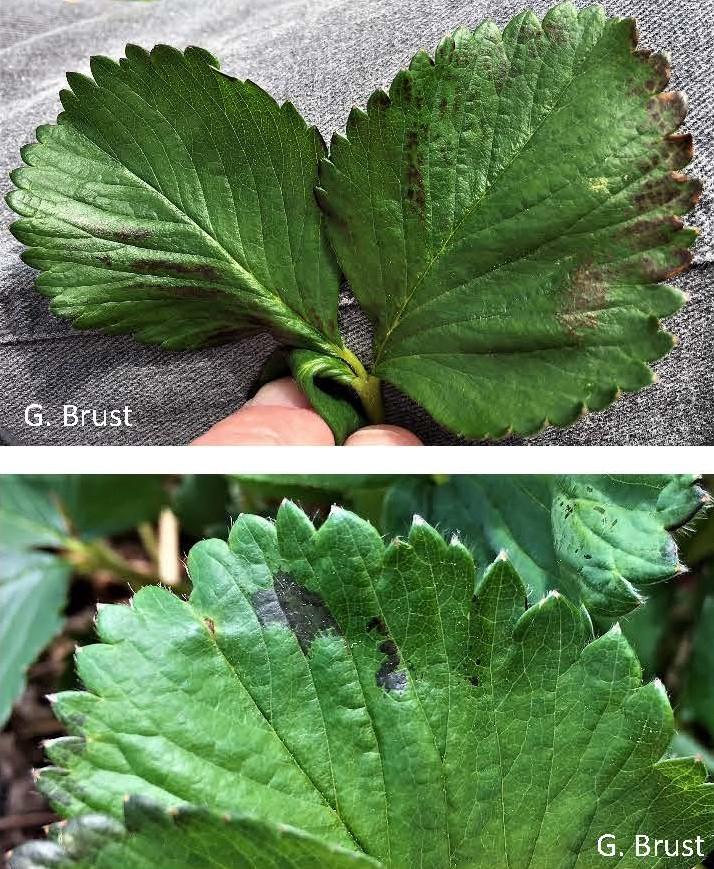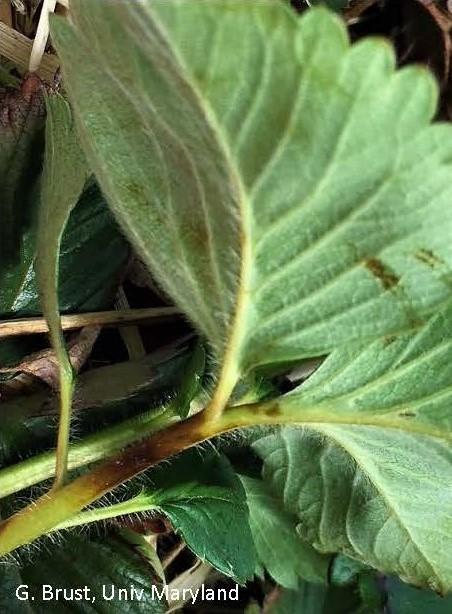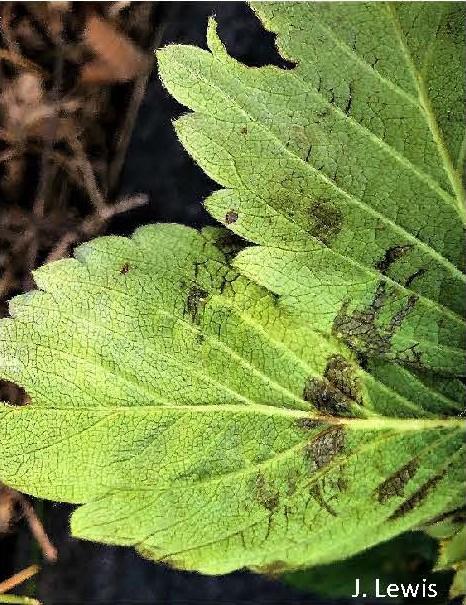Over the last few weeks I have been sent pictures of and have seen dark spots on the foliage of strawberry plants (figs. 1 and 2). These spots can look pretty bad at times and are thought to possibly be the start of some disease such as angular leaf spot or anthracnose. The dark spots are usually on the upper or lower surface of the leaf, but at times can be found on both surfaces of a leaf. These damaged areas of strawberry foliage can be very disconcerting when they appear as dark spots on the stems (fig. 3) These dark markings on petioles are not sunken as they would be if it were anthracnose. No bacteria or fungi have ever been found associated with these dark spots. I have seen this type of discoloration in strawberry foliage early in the season many times over the years and have never seen the spots turn into any disease problem or any other type of problem. The best that we can come up with is that the plant has ‘bruised’ foliage. And as you look at the spots this is exactly what the damage looks like (kudos to Karen Rane for coming up with this description of the damage). This damage usually appears within a short time span after high winds occur. Fig. 4 shows a good example of this as you can see the bruised areas of the leaves that appeared a few days after a very windy period on April 15. Also notice the tattered appearance of the leaf edges demonstrating that these leaves were knocked around a great deal.It is possible that disease organisms might enter the plant through this damaged tissue, but I have never seen this occur to any extent in the field—even during the wettest spring. Nothing needs to be done about this bruising, growers just need to be aware of the possibility occurring after wind events.
Return to Horticulture and Disease Topics
This article appears on June 10, 2021, Volume 12, Issue 3 of the Vegetable and Fruit News



Vegetable and Fruit News, June 2021, Vol. 12, Issue 3
Vegetable and Fruit News is a statewide publication for the commercial vegetable and fruit industries and is published monthly during the growing season (April through October). Subscribers will receive an email with the latest edition.
Subscribe